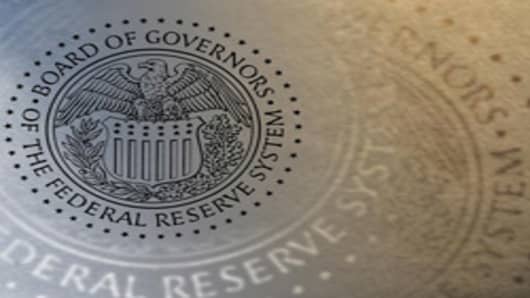The flu outbreak, which started in Mexico and has spread to the United States and elsewhere, could force U.S. consumers to retrench further. That would deal a blow to the domestic economy, which has flashed some signs the recession could be letting up a bit.
To ease the impact of the recession, economists predict the Fed will keep its targeted range for its bank lending rate between zero and 0.25 percent at this week's meeting and probably well into next year.
With its key rate already at a record low, the Fed will examine the effectiveness of programs already in place to combat the worst financial crisis since the 1930s. Fed policymakers will consider whether programs designed to ease the credit crunch need to be expanded or changed, and whether new relief efforts need to be implemented. Any decisions would come at the conclusion of the Fed's meeting on Wednesday afternoon.
"This is a good meeting for Fed policymakers to pause and take stock of what they've done so far and allow programs to do their thing," said Michael Feroli, economist at JPMorgan Economics.
Feroli and others aren't expecting the kind of aggressive action the Fed took at its last meeting in mid-March. That was when it decided to plow a staggering $1.2 trillion into the economy to try to lower interest rates and stimulate borrowing and spending.
More spending by consumers and businesses would help lift the country out of the recession, which has dragged on since December 2007. That's because consumer spending accounts for about 70 percent of U.S. economic activity.
The U.S. economy has sunk sharply, although analysts are hopeful the rate of decline is lessening.
In the final three months of 2008, the economy contracted at a 6.3 percent rate -- the worst showing in a quarter-century. Economists predict it probably declined at a 5 percent rate in the first three months of this year. The government will release its initial estimate for first-quarter economic activity Wednesday morning.
Before the swine flu outbreak, many analysts were predicting the recession would ease further, with the economy shrinking at a rate of 2 to 2.5 percent in the current quarter.
However, analysts warn that any severe outbreak of the swine flu would not only clobber tourism, food and transportation industries, but crimp spending on other things if consumers get spooked.
For now, analysts are hopeful that any economic fallout will be limited and short-lived. But much hinges on the scope of the flu infections and how they affect consumer behavior.
A Congressional Budget Office report in 2006 estimated that a severe bird flu pandemic (roughly similar to the 1918-1919 Spanish Flu outbreak) that would leave roughly 90 million sick and kill 2 million people would mean a 4.25 percent drop in U.S. economic activity. In a less severe scenario, where 75 million people are infected and about 100,000 of them die, economic activity would be about 1 percent lower.


